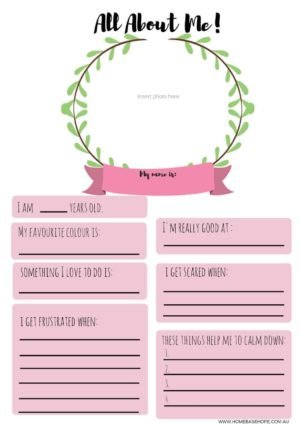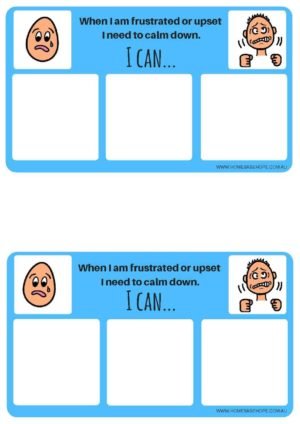Autistic children can live in a very stressed state. Transitions, sensory overload or a change in routine can leave a child feeling anxious and stressed. If your child has difficulty expressing and regulating their emotions they can become even more stressed, leading to challenging meltdown behaviours such as hitting, screaming or biting.
Common meltdown triggers:
-
- change to normal routine – e.g. a cancelled after-school activity
-
- change to the environment – e.g. a change in classroom, rearranging furniture or moving house/school
-
- sensory overload – e.g. loud unexpected sounds
-
- unfamiliar social situations – e.g. attending a friend’s birthday party
-
- fear of a situation, activity or object – e.g. afraid of the dark
While you may try your best to avoid the triggers as much as humanly possible, unfortunately some things are out of our control despite all of our efforts. In this case, we need to be armed with a toolbox of strategies.
Just remember that we all have our own preferred ways to calm down. We need to find out what works best for your child.
Here are 6 of our favourite calming strategies that can be used at home or school:
-
- Create a safe place: A safe space is somewhere where your child can go whenever things become too overwhelming. You can set up this safe space by putting up a tent in the corner of a room. The tent can house calming sensory tools such as headphones and calming music, fidget tools or a note pad for drawing and doodling.
- Deep breathing: Deep breathing when anxious and overwhelmed reduces the heart rate and calms the nervous system. It can help return your child to a more stable, safe and calm state. Deep breathing exercises for littlies could be as simple as blowing bubbles or blowing out finger candles (the candles being fingers – yours or theirs).
- Deep pressure: The use of deep pressure is extremely calming for autistic children. A firm bear hug or deep pressure massage can be very effective.
- Movement: The repetitive linear movement of swinging back and forwards in a swing can be very soothing and calming for the nervous system.
- Create a ‘calming’ kit: A calming kit is a simple homemade kit which includes a number of different sensory tools for your child to access when they are experiencing a big emotion. This kit could include a stress ball, bubble wrap, chew tools, eye masks and visual cues for deep breathing exercises.
- Fidget tool: Fidget tools allow for repetitive behaviour in a controlled and safe way. Children may fidget as a way to help calm, sooth and self-regulate. Think: squishy toys and stress balls.
Remember that these are all great ideas for helping your child calm down, but they will always be most effective when an adult supports with co-regulation strategies.








